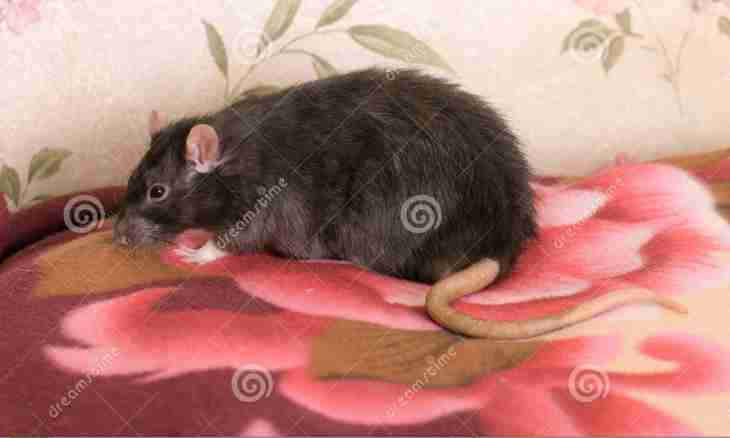Since ancient times of a rat were considered as enemies of the person because they destroyed reserves of grain and served as carriers of infectious diseases. In the middle of the 19th century the rat catchers began to keep and tame the coming across rats albinos as exotic animals. At first descendants of the tamed rats were used mainly for laboratory trials and only from them has the luck to become the little someone's pets. However interest in keeping of decorative rats steadily grew, and today they enjoy wide popularity.
Character of decorative rats
Domestic rats are sociable, clever and friendly, willingly make contact with the person. In comparison with other rodents, rats have the developed intelligence. Besides the common features peculiar to all rat sort, each house rat also has own traits of character: some small animals quiet and phlegmatic, others — active and curious, the third — unruly and fussy.Very important trait of character of all rats is their sociality. Small animals should not live in loneliness — they surely need the rat company. Communication with the person is very important, but even the most loving and careful owner will never replace to the relative's rat. Rats like to play and sleep together in an embrace. Besides, they with pleasure take a bite and lick each other a hair.
Way of life of domestic ratsDecorative rats are supported same-sex packs. If there is no opportunity at the same time to hold several rats, it is possible to bring two. Of course, to live in pack more cheerfully, but also together it will not be boring for rats. Some inexperienced owners believe that it is better to make the "rat family" consisting of a male and a female. But, as rats differ in early puberty and fertility, soon on hands the owner of heterosexual animals will have a great number of little infant rats who will need to look for the house. For now the owner is busy with search, the rat female will become pregnant again. It is possible even at bringing up of the previous dung. Therefore even the breeders of rats who are professionally engaged in reproduction and breeding work do not support heterosexual animals together constantly. The male and a female are imprisoned in one cage at most for 3 days and only for the purpose of receiving a dung. Contrary to popular belief, tame rats do not suffer without communication with an opposite sex at all. Moreover, they do not need knittings "for health" and do not experience any tortures owing to lack of sex life.
The choice of a cage for decorative rats
The ideal dwelling for tame rats is the cage with a plastic pallet and the enameled metal rods. The cage has to be spacious. To understand for how many keeping of rats the cage is calculated, it is necessary to increase its length, height and width in see the Work then it is necessary to divide into 60,000 if in a cage there live males, or on 40,000 if in a cage it is planned to occupy females. The number received as a result will also be the maximum number of rats who can be lodged in this cage.
Feeding of domestic rats
The basis of a diet of tame rats is formed by the mix consisting mainly of cereals and grain (wheat, oats, corn, a buckwheat, barley, a rye, rice) and also a small amount of seeds and nuts. Ready prepared such mix can be bought in pet-shop. Also it can be made independently. Industrial forages for rodents are considered as more balanced. However decorative rats quite often eat only certain types of grain from ready-made feeds, and the rest should be thrown out. Therefore many owners prefer to make mix, being guided by tastes of the favourites. Besides grain mix the rats are given surely fertilizing in the form of fresh vegetables and fruit, greens, low-fat boiled meat and fermented milk products.

